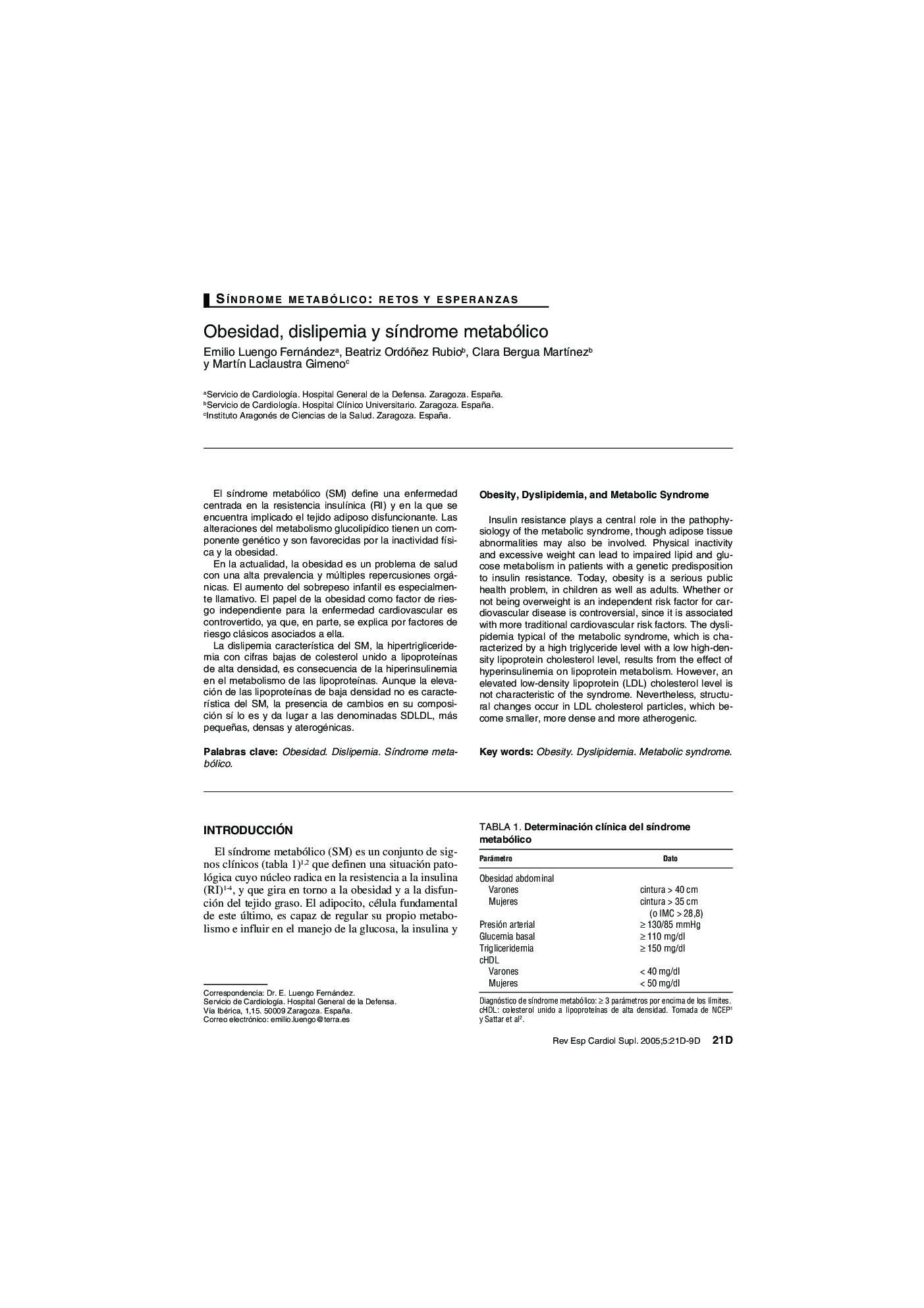| Article ID | Journal | Published Year | Pages | File Type |
|---|---|---|---|---|
| 9182267 | Revista Española de Cardiología Suplementos | 2005 | 9 Pages |
Abstract
Insulin resistance plays a central role in the pathophysiology of the metabolic syndrome, though adipose tissue abnormalities may also be involved. Physical inactivity and excessive weight can lead to impaired lipid and glucose metabolism in patients with a genetic predisposition to insulin resistance. Today, obesity is a serious public health problem, in children as well as adults. Whether or not being overweight is an independent risk factor for cardiovascular disease is controversial, since it is associated with more traditional cardiovascular risk factors. The dyslipidemia typical of the metabolic syndrome, which is characterized by a high triglyceride level with a low high-density lipoprotein cholesterol level, results from the effect of hyperinsulinemia on lipoprotein metabolism. However, an elevated low-density lipoprotein (LDL) cholesterol level is not characteristic of the syndrome. Nevertheless, structural changes occur in LDL cholesterol particles, which become smaller, more dense and more atherogenic.
Related Topics
Health Sciences
Medicine and Dentistry
Cardiology and Cardiovascular Medicine
Authors
Emilio Luengo Fernández, Beatriz Ordóñez Rubio, Clara Bergua MartÃnez, MartÃn Laclaustra Gimeno,
